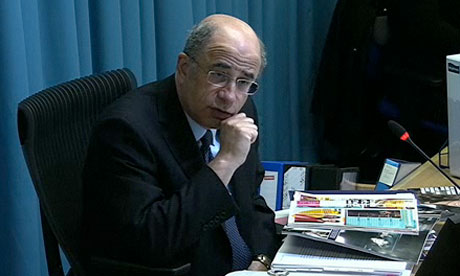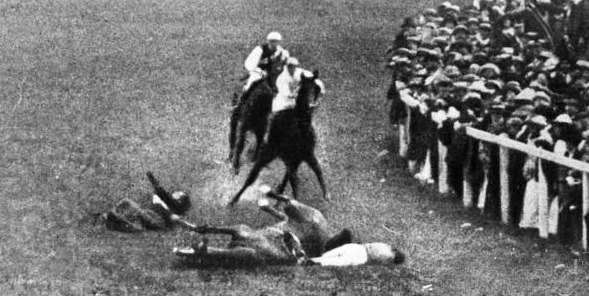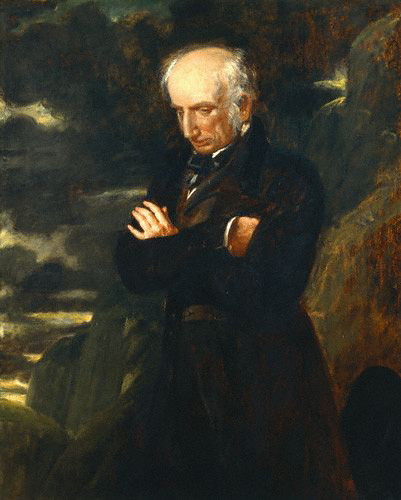The thought of taking a Ryanair Flight always creates mixed feelings. They have a reputation after all. However, sitting down and thinking about it they are an efficient organisation. Marilyn researched our trip, found the flight, bought our tickets online and printed off our boarding passes all whilst sitting at home at our home desktop. If we had wanted to take large suitcases we could have paid more for that privilege but as we were going to Venice for two nights we just took hand luggage, like everybody else on our flight. Hand luggage is free of any extra charge and merely has to be placed in the shelf above the seating. Then there is the airport experience. Crowds herded into tight fitting, close fitting seats. Yes, not so good for the obese but generally, for short haul flights and the averagely slim of waist, not too bad. There are the excruciatingly awful cabin crew’s sales pitches trying to sell us perfumes and over expensive coffees but if you resist those temptations on a shorthaul flight, it’s still not too bad either. The worst thing is the trumpet fanfare when the flight arrives ten minutes early and an announcement in ringing Irish tones sings that Ryanair once more has arrived early, which is followed by the percentage breakdown of Ryanair flights that are early or on time. This happens every time I have flown with them. I was left wondering which flights have been late to create this not quite perfect, marvellous, percentage of 94% of on time or early arrivals. The captain of the Boeing 707 joyously announced that he had made up ten minutes of flight time. How did he do that? You can imagine Ryanair flights charging about our skies barging and pushing their way amongst all the other airline flights who timidly make their way above our heads trying to avoid the Irish bully. But no, that could not happen, could it? On the whole Ryanair is a good thing. They have changed our perception of flying around the world from one of comfort and luxury and a certain amount of taking your time and being treated obsequiously, to one of, well, a good analogy might be just hopping on your local bus to the shops. That is not a bad a thing. It is just a different way of looking at things. This is what taking flights had to evolve into and what is more it is far far more democratic. It’s cheep after all.
So we flew in across the Alps, rugged, wrinkled and snow covered towards Trevisso Airport, Venice’s second airport these days. Trevisso is a Ryanair created second airport for Venice, about twenty-five miles from the wondrous city. A reasonably quick, forty-minute bus trip took us to the bus station on Venice Island itself. We travelled through the brutalist world of industry, edge of town superstores, railway lines and concrete motorways. The bus suddenly left behind the concrete reality of the mainland and took us out into a watery world across a long causeway with fishing nets staked out in the shallow waters and in the distance a glimpse of the swollen domes of Renaissance churches.
The Rialto Bridge across The Grand Canal.
We arrived at the bus station and as soon as we stepped out, there in front of us was the beginning of the Grand Canal.There were motor launches and our first sight of a blue and white striped jumper clad gondolier standing squarely in the stern of his burnished black lacquered gondola. I was expecting him to burst into a resounding operatic chorus of “One cornetto. Give eet to me…” but he didn’t. The whole of the three days we were in Venice I didn’t once hear a gondolier exercise his operatic lungs. Maybe singing gondoliers are just a myth.
Gondolas, cafes and restaurants on The Grand Canal.
With only hand luggage, walking through the alleyways and along the canal side pathways of Venice was not a problem. The map that came with our Rough Guide guidebook about Venice was a problem though. The names of the canals, bridges and alleyways on the map didn’t correspond with the actual names of these places. I nearly threw the map away. We found the best thing was to follow our noses. We could say with some confidence that we wanted to head, north or east or west and so we kept turning down alleyways, hitting dead ends often, retracing our footsteps taking another turn and eventually, mostly, mainly, we got to where we wanted to go. Sometimes it was pure luck we got to our intended destination I must admit but we saw sights and had unexpected adventures along the way. We would never have come across the gondola boatyard intentionally, with gondolas being built, repaired and fitted out on a ramp set amongst a huddle of dilapidated orange brick buildings with twisted roofs of undulating tiles and creosoted wood panelled walls.
A gondola boatyard.
Our hotel was in the Dorsoduro district of Venice on the south bank of the grand Canal. We were a mere 100 metres from the Pont del Academia and about three hundred metres from the Peggy Guggenheim Collection. Peggy Guggenheim collected European and American art and this collection is one of the most important of this genre in Italy. It is situated in the Palazzo Venier dei Leoni on the Grand Canal, the home Peggy Guggenheim lived in. It fronts the Grand Canal but at the back there is a small intimate canal with local housing and small shops along it.
The Grand Canal from Pont del Academia with the Peggy Guggenheim museum on the right.
Venice lives up to its photograph. It is absolutely beautiful. There is a Venetian style that can be found to certain extent in other Italian towns but not in such a concentrated way it is here. The windows of so many flaking crumbling buildings have a mixture of Moorish and Christian Gothic about them. Venice is most decidedly Christian with so many absolutely gorgeous Roman Catholic churches with such gilded and elaborate interiors. You could drown body and soul in all that Catholic symbolism. Your every sense is assaulted with pure medieval beauty. But take into account how Venice developed and became such a trading powerhouse. It absorbed influences from the places it’s far reaching and powerful tentacles reached and in the architecture and most obviously in its window designs you can see it.
A Venice alleway.
Now, this is one of my hobbyhorses and its’ about all this apparent material wealth tied up in so many Catholic churches the world over, not just in Venice. It used to be a siren call. “ The Catholic Church has all this wealth. Why can’t it sell all this stuff and use the money to save Ethiopian drought victims or feed the poor of the world?"
Who would want to buy a gold jewelled encrusted chalice or one of the fine Tintorettos sprinkled around the many churches of Venice and how would a ceiling by Veronese be got rid of? Works like this you find in many of the fine churches in Venice. How do you turn this stuff into money? They are not there for art experts to contemplate as art or for us to treat them like museum pieces or the churches as museums and galleries or as a source of wealth. They are a form of prayer and worship. The best artists, the finest craftsmen, the best materials, designers and architects produced this work to the best of their ability to praise god. Their work was their prayer. The Catholic Church did not and does not benefit from these things in a financial way. They do not make the church rich. These things are prayers and have spiritual meanings. But of course you might have a different viewpoint to me!!!!!!
One of the many many churches in Venice.
We strolled around Venice looking at all the fashion shops. All the great fashion houses have their shops here, Gucci, Christian Dior, Channel, Givenchy, Gaultier, Versace, Armani and many others too. These shops are like art galleries and the fashion on show in them are like works of art. They are spectacular to walk past, window shop in or timidly and warily walk into. However the prices Wow!!!! A handbag for over 1000 euros? You must be joking! Shoes at nearly 2000 euros a pair!! Phew!!!!!! And those are the less expensive side of haute couture.
Then there were the shops that sell artisan created goods often made in small workshops on the shop premises such as papier-mâché art and artefacts, paper makers and hand made book makers who hand sew books with tooled leather covers. There were many galleries selling the most exquisite Venetian glass, chandeliers, mirrors, vases and bowls exhibiting beautiful translucent colours. So many shops are stocked with masks ready for the ten day carnival they have in Venice every Easter. Many of the masks are made in the shops and elaborate 18th century costumes are on display for your hire too. The idea of wearing a mask for ten days over Easter has it’s social and perhaps even moral side. A mask wearer takes on a new identity. Their everyday day identity disappears. They can create a new persona, do things they would not do as their usual selves. Masks create danger and intrigue. But then of course there was shop after shop selling tourist tat, expensive rubbish. There are so many restaurants, coffee bars and wine bars throughout Venice, all with welcoming and friendly bar staff. Every Venetian I met had a sense of humour and great big smile.
A small gallery in a back alleyway.
We found the building where the Venice Art biennial is held every two years. It was once a palace facing the waterway between Venice and the Lido. It has an expansive water view. Venice also holds film and architecture biennials and it is these that I think are Venice’s important contributions to the world today. Apart from those important contributions Venice of course, is now a place for tourists .
Venice’s history is incredible. The Venetians gave the world many things, which have developed into important parts of our society and forms of government. The Republic of Venice lasted for over a thousand years from about 740 until 1797 when Napoleon defeated the Venetians and France took control. Venice is a prime example of the all-powerful city-state. It was not a country. It was an independent city that controlled trade all over the Mediterranean and Europe. It was almost continually at war with the Ottomans. The Venetian Empire grew and shrank with success and defeat. As a republic it had no king or royal family. The Doge, the ruler of Venice, was an elected official from amongst the most powerful families of Venice. He was usually chosen because of his astute abilities at trade and negotiating skills. In this way the government of Venice was a meritocracy. The election for a Doge was similar to that of a pope and like a pope he stayed in that position for life.
Marilyn and I visited the Doges Palace next to St Marks Basilica, beside St Marks Square. It was a fascinating place not least because of its gorgeous architecture. John Ruskin in the 19th century described the Doges Palace as the most perfect building architecturally in the entire world. He described it as being a perfect combination of Moorish and medieval gothic designs. The palace is designed for a purpose and this purpose was the purpose of government. There are rooms for the great council, for law making, law courts, even a small room that held officials to make sure the law was being followed correctly. There was a department for spying on foreign governments. There was a council for foreign affairs and a council for governing industry within Venice itself. There was a separate room where trade and everyday life within Venice was controlled. There was a room where sailors were recruited for the all-important Venetian Navy. It is easy to see how this form of government structure has developed, with all it’s departments and concerns, into the sort of governments we have.
The Doges Palace.
Next door to the Doges Palace is Venice’s prison. It was here Casanova was imprisoned for a while. The entrance to the prison is across the enclosed Bridge of Sighs. The prisoner would have been taken from the courtroom in the palace straight to their prison cell. Marilyn and I followed the rout a prisoner would take and saw the last glimpse a prisoner would get of Venice from the small windows in the Bridge of Sighs. The cells consist of rough stonewalls. Any light getting in to them is from apertures high up in the walls so the prisoners could not see out to the outside world. Each cell was virtually a stone cave.
The Bridge of Sighs leading to the prison on the right.
Once you were inside one of those you were dead to the world. Imagine being incarcerated in a Venetian cell. The only place you were alive was inside your own head. There you would be, inside a stone cell, doing absolutely nothing, day in, night out. You would be fed once a day and then nothing. Imagine it, nothingness. Your whole humanity confined to an empty space. You or I would probably go mad.
St Marks basilica in St Marks Square.
St Marks Basilica was awe-inspiring. It was a symbol of the Venetian superiority in the Mediterranean and it’s power over the Ottomans. St Marks body was stolen from the Egyptians in a Venetian raid. The basilica was built as a great celebration to house St Marks body but also to celebrate Ventian strength and power over the Ottomans. Marilyn and I both wondered where St Marks body was situated within the basilica. A church guide told us it was within the silver covered high altar. All Catholic altars have to have a piece of a Saints reliquary within it to make it an altar. So this does sound plausible. Marilyn and I walked around the high altar, which is fronted by a solid silver embossed relief of the life of St Mark. We saw medieval pilgrims badges hanging from a wall and at the back of the altar was an incredible solid gold frieze , jewelled and encapsulating pictures of saints.
The Lion of St Mark on the left, the great camponile that rang out it's bells on the hour, and The Doges Palace on the right.
Venice is an incredible place. You cannot resist taking photographs. Every inch of the place is photogenic. Windows, walls, rooftops, flower baskets, narrow, dark, damp canals all cry out to be photographed. I couldn’t stop taking pictures. There are fantastic churches everywhere. Art galleries are in abundance. The Academia, Venice’s main gallery, full of Renaissance art was open but undergoing refurbishment, so limited numbers were allowed in. There was a Picasso exhibition and a Salvadore Dali exhibition going on in different places. Venice is full of tourists from every nation. Venice attracts us all to marvel and wonder.












































































